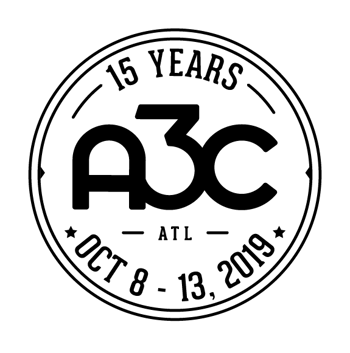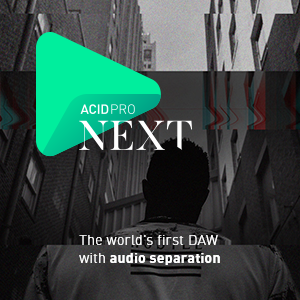Hey Artists,
What does "getting signed" mean?
It's a word we've thrown around throughout our careers, it's a term we see on TV and reality shows, but what the hell does it really mean? It's something you dream of, it's something you work towards, so.. what does it mean?
In actuality, it doesn't really mean anything. It's a vague catch-all term that can be applied to any agreement between a label and an artist.
But think about that... think about how dangerous it is, that something you strive towards is also something you don't really understand.
We get so startstruck by a contract that we sign something we don't understand - and we get caught up in a contract dispute, something we've seen with everyone from Childish Gambino, Kesha and Lupe Fiasco to Lil Wayne, Prince and Michael Jackson. So when you "get signed" what are you signing?
We've discussed contracts in a few past articles here- check 'em out, but today we're doing a deeper dive into contracts and what the hell a deal actually is. But first a bit of history and some framing.
Decades upon decades ago, if you wanted to record something - you needed a recording studio, which was rare back then. However, record(ing) labels owned studios - and if you wanted to record, they'd help you record but also promote it. You'd start making money once you recouped the cost in sales. In other words, if the session cost you $2,000 bucks, you wouldn't see any cash until you sold $2,000 worth of records.
However, today - you have a recording studio on every corner, or even in your basement.
As labels evolved they began offering larger contracts, such as ones that came with larger distribution. They'd get your album in stores and later - placed on web-based outlets.
But today - you can do the same thing via TuneCore or CDBaby, plus or minus some label-based perks.
In the post-Napster industry, outlets began to offer artists 360 contracts, which meant they would help sell every portion of an artists career - booking, merch, licensing as well as sales. However, it also meant they'd take a larger cut. While this worked for some, it really smothered young artists.
And today, with social media - visibility is a bit easier, so having a label control all aspects may not be attractive to all artists. (I'm also majorly over simplifying for purposes of this brief intro).
When folks began realizing that recording, distro and marketing isn't all that exclusive, an even larger renaissance of indie labels started appearing. However... some still offering incredibly similar deals as major labels. Maybe there was a better % cut, or some small details - but they had the same distro reach, marketing doors, and more. I mention this because a lot of artists think it's major label vs. indie label - but it's not.
It's about deal vs. deal. Not major vs. indie.
A major label can give you a great deal that works for your career - or a bad one that shelves you and stunts you.
An indie label can give you a great deal that works well for you - or a bad one that leaves a hole in your pocket.
I've been on teams where both has happened, that's why it's vital for artists to look beyond vague terms like "getting signed" and "indie" and actually read into what they mean.
So, here's a few of your standing recording deals, and what they mean.
A quick note: I'm not an entertainment lawyer. To save myself from giving you information that isn't 100% concrete, we're going to do overviews here. This will open the window, but if you get signed, then it's up to you (and your lawyer) to climb through and explore what's inside.
Another quick note: This isn't meant to show which deals are better than others - one deal might work for one artist, but won't for another. Similarly, these are often tweaked and discussed to meet an artists exact needs (or atleast they should be). Similarly, there's many other deals that exist, but these are some of the most common.
The Standard Recording Deal.
The funny thing is, it's not so standard anymore. This is the aforementioned "recording deal" which was more common when getting into a studio wasn't so easy. However, I'm including this for a few reasons, mainly because it's still used today by some A-list talent who don't need a marketing or distro arm, but I'm also including it because this deal occasionally pops up in the indie scene. It's not typical, but usually an inexperienced indie group will offer this type of contract. It's not a bad contract, but since there's no marketing arm or distro deal in the fine print, it's not ideal for a newer artist.
The contract is based upon albums, and any other extras such as marketing or distribution are separate and not included. The label (or other governing party) usually also dictates how many albums as well as tracks are on the final product. This deal may be good for you if you already have a large engaged fan-base, but you likely need something with a bit more perks.
The 360 Deal.
The 360 deal, aka the multi-rights deal, is a really common deal and is often one of the record deals a label (typically major but some indie) approach an artist with.
The 360 deal genuinely had the best of intentions - but it's still met with mixed reviews, but at the end of the day it's a very standard contract that can help an artists career greatly, if the terms and conditions are appropriate.
A very quick backstory: Napster and file-sharing were killing album sales in the mid-late 90's. Artists weren't getting the same revenue from music sales, so record labels would assist but also take a percentage of all revenue streams: touring, merch, licensing, music sales and more. In theory, it was a great set-up!
However, as the internet evolved, it became a bit easier to sell merch and book shows - largely due to the power of social media. Also, since the label has a hand in merch sales, sometimes they want to be involved in the creative control of it. Another concern of the 360 deal is that artists may feel as if labels are taking a cut of the profits, but aren't doing enough work in spreading the word.
However, on the other hand - the marketing opportunities can be great with a 360 set-up, especially for an artist with an attractive brand. There's the risk of things moving slowly, or even you being shelved for a bit, but the label carves out a distinct path to success with a 360 deal. With the right negotations, the right percentage breakdown and the right consistency in marketing - this still can be a good avenue for new artists.
The Single Deal.
Singles are becoming more common in music - especially as streaming and radio still remain two major forms of music consumption. Therefore, a variation of the standard recording deal, would be the singles deal. Where, you guessed it, the focus is placed on a single rather than a full album. This is used to test the waters by majors to see if it's worth signing a larger deal, or it's used by joint-ventures, indie labels and more to simply put out a new single to see how things move in the market.
Generally the pay structure is still quite similar to your standard contract, but it's also less of a risk for an artist. As recouping the price for one single, is a lot less than recouping the price for a full-on album with 12 or so tracks.
Deals Between Labels: Joint Venture Deals/Profit Split Deals
This is more of a scenario than a deal, as various deals can happen in this arrangement, though it's a good arrangement to be in and tends to be more fair to the artist.
Ever read those articles about how Artist X claims their indie but they have a "secret recording deal" with a major! Well, this is that secret recording deal and it's not so secret, at all. Actually it's very common.
I'm oversimplfying here but there's three main components to making a record: Recording, Distributing and Marketing.
It's pretty standard for an indie label to handle one of those components and have a "third party" handle another. So the label may handle recording and managing, while the third party handles distribution and marketing. However, sometimes that third-party is owned by a major label, or -- straight up is a major label.
A good example is ADA (Alternative Distribution Alliance) or RED. These are two artist development/distribution companies that often partner with indie labels. The indie labels will handle the recording of the album and management of the artists, but RED or ADA will assist in the marketing and distribution of the final product. They work with as a third party, and work with the indie label's budget.
ADA is owned by Warner while RED is owned by Sony Music. They operate as separate entities from their major label parent companies, but there's still the tie-in, connections and expertise which benefits the indie label and thus, the indie artist. The indie labels are just using these companies as resources, and it's usually per project.
That's a bit more masked of an example, sometimes indie labels will straight up have joint ventures with major labels, where the major is getting a piece of the pie for the marketing work they do (aka a profit split).
Many types of deals can occur under this arrangement, such as a typical recording deal, or even a variation of a 360. However, my point is that it's beneficial to find an indie label that has some form of marketing and distro partnership that will benefit you as an artist.
At the artist level, you don't see or notice that your indie label is working with a major affiliated development company and it doesn't matter, either. Typically you have more flexibility in your percentage cuts, while still getting the benefits of working with a well connected indie (and major) label.
These are just a few common deals running around the market today. These can be varied, built upon, tweaked and even called by other names. However, next time you say your goal is to sign a deal - take some time to know exactly what "deal" works best for your brand.
And also remember:
While a deal sounds sexy, it may not even be something you're ready for. Be sure to grind on your own, and build your brand before entertaining contracts with labels. It's great to start off strong on your own, so you can navigate better with a team.
Check out the link in my bio below to discuss further and to prep you for future business deals.



